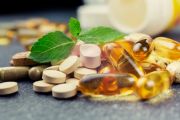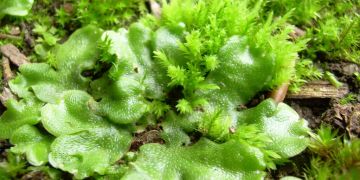### Habitat and Cultivation
Liverwort prefers deciduous forests with loamy soil, but the plant has been found in clay soils, lime soils, and in grasslands. It is indigenous to the eastern United States, ranging as far north as Iowa and south to the Florida panhandle. Typically a lowland plant, it has been spotted in the Allegheny mountain range. Many variations of the species hepatica exist around the world, including those on the Asian and European continent. At least one variation is indigenous to Japan. Taxonomists continue to argue over liverwort's standing in relation to these relatives.
Liverwort is a deep-rooted and hardy plant. It requires good drainage and can survive in most soils that meet this requirement. Unlike other medicinal herbs, this one actually prefers a rich, porous soil and shelter, hence its profusion in lowland, deciduous forests.
The leaves are the medicinal part and should be harvested while the plant is in bloom and dried in the shade.
The liverwort plant is considered to be endangered in many areas, though it's broad, dark-green leaves can still be found in temperate forests and grasslands across the world. Many early herbalists treated the plant dismissively, and modern science has yet to widely investigate the qualities that have been ascribed to it for centuries.
Historic and Modern Uses
This herb was first identified by the Doctrine of Signatures and has been mistaken numerous times over the centuries for other herbal remedies. The first pharmaceutical reference comes from Tournefort's 1708 Materia Medica. It has been classified as an astringent, gentle herb suitable for topical applications in healing wounds and biliary complaints, from gallstones to jaundice. Grieve considered hepatica as an expectorant useful in bronchial conditions. Due to conflicts between authors, who were promoting their own herbal remedies through publication of herbal lists, liverwort appears prominently in some texts and is utterly ignored in others.
Preparations of liverwort are now primarily used for liver ailments. Herbalists may occasionally provide a topical rinse or liniment of the herb for skin conditions. Owing to the lack of scientific evidence confirming the actions of liverwort, it may be best thought of as a gentle tonic for the liver, instead of a primary remedy.
Active Constituents
Primary constituents of prepared hepatica include flavonoids and saponins. Saponins are also found in a number of more widely known medicinal herbs including ginseng, soybean and onions. Saponins have shown immuno-modulating, anti-inflammatory, and expectorant properties. This suggests early uses of liverwort in lung illnesses were correct.
Flavonoids are considered the active constituents of liverwort and include flavo-glycosides, anthocyanins, and lactone-forming glycosides. Anthocyanins are what give red fruit its colour. They have been investigated extensively for anti-inflammatory action with positive results. The flavo-glycosides in hepatica include quercitrin, isoquercitrin, and astragalin.
Astragalin has shown some efficacy in treating dermatitis.
Isoquercitrin is a superior form of quercetin, due to better absorption, and both have been proven to aid capillary health by strengthening vessel walls.
Quercitrin is broken down to quercetin and glucose during digestion.
The plant must be prepared carefully prior to use, because the fresh plant contains the precursor ranunculin, which produce protoanemonin on contact with the skin and mucous membranes. These compounds can cause blisters, which heal slowly. Severe irritation of the digestive tract follows ingestion of the unprocessed plant.
Dosage Forms and Amounts
No side effects have been reported from therapeutic dosage of liverwort. The fresh plant should be avoided, due to irritating constituents that are destroyed through drying and preparation. There is no defined dosage for liverwort rinses or liniments. Alcohol, oils, and fats have been used successfully as topical carriers.
Internal dosage has traditionally been through infusion or extract of the herb. Dosage should not exceed 3.8 grams of the dried herb, which is roughly the equivalent of 4 teaspoons of a 3-6 percent infusion. Tinctured extracts may be more precisely calculated, depending on the reputability of the source. Capsules of powdered liverwort are now available to simplify dosage.





